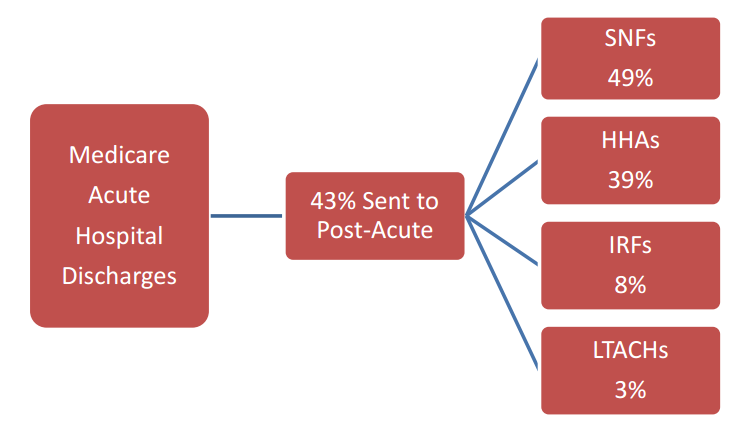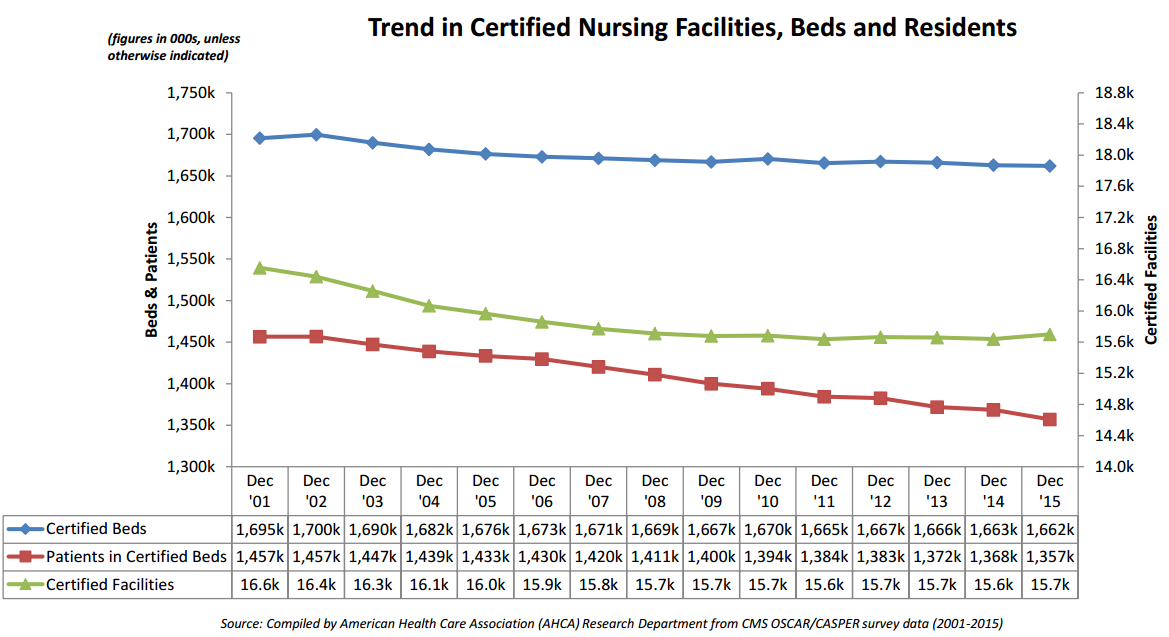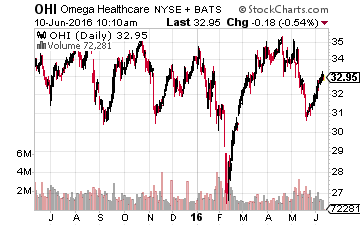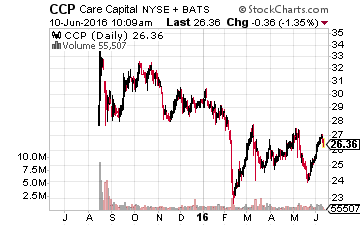2 REITs With Attractive Yields And Growing Dividends
The overall REIT universe can be divided into a number of distinct sectors such as shopping centers, hotel/lodging, industrial space, and apartments. The healthcare properties sector is viewed as one REIT group with strong demographic trends for steady future growth. However, over the last year, some of the healthcare REITs have missed their revenue targets due to overbuilding in certain markets.
Senior living facilities represent the biggest investment type for the healthcare companies. While the number of older citizens who will need to move into this type of facility continues to grow, the industry has overbuilt in many markets. The result has been lower occupancy rates and aggressive pricing competition. For those REITs with the majority of their assets in the senior living subsector, it may take several years for demand to catch up with supply. The better-managed healthcare REITs should be able to continue current dividend rates, but investors may not see the dividend growth that they experienced in the recent path.
RELATED: How to get reliable and automatic raises from stocks that always increase dividends
Skilled nursing facilities (SNFs) are a different type of healthcare property. Someone is sent to a skilled nursing facility after they are released from the hospital. The SNF can provide lower cost recuperation time or therapy. This chart shows how out of all of the Medicare recipients that are hospitalized, 43% are sent to additional care after they leave the hospital. Of that group, 49% end up in a skilled nursing facility

If you are curious, here are the other acronyms: Home Health Aide (HHA); Inpatient Rehabilitation Facilities (IRF); and Long-Term Acute Care Hospital (LTACH).
While the number of older citizens who have higher probabilities of being sent to a SNF continues to grow, the number of facilities and beds is in a slow decline.

Of additional interest to investors is the fact that just 16% of the total national SNF inventory is owned by REITs and 56% is in private, operating for profit, hands. The opportunity for the REITS operating in this sector to grow their businesses through acquisition is great. The primary risk for SNF owners is that the bulk of revenues come from Medicare and Medicaid payments, which are subject to political changes.

While there exist large healthcare REITs that own some SNF’s along with other types of facilities, there are only two REITs that give pure play investment exposure to the SNF type of facility.

Omega Healthcare Investors Inc (NYSE:OHI) is the long-established and investor favorite in this small group. This REIT has been a public company since 1992. Omega has fueled its growth through acquisition and has rewarded investors with steady dividend growth. In recent years, the OHI management team has followed a practice of increasing the dividend by one cent each quarter. The result has been 9.7% average annual dividend growth for both the last 5 and 10 year periods. OHI has a market cap of $6.3 billion and currently yields 7.0%.

Care Capital Properties Inc (NYSE:CCP) is the new player to the pure-play SNF space. The company was spun-off by large-cap REIT Ventas, Inc. (NYSE:VTR) in August 2015. CCP has just gone ex-dividend for its fourth dividend since the spin-off. This means the company has not yet started any track record of dividend growth. Ventas is well known as a long-term, high-single-digits dividend growth company, so investors may get the same from Care Capital Properties. The company has a $2.2 billion market cap and currently yields 8.5%.
These two REITs are focused on a smaller sector or the larger healthcare real estate pie. Because of the focus, the yields are significantly higher than the more diversified healthcare REITs. However, Omega Healthcare has put up a very attractive record of growth and Care Capital Properties has the potential to do the same.
Finding stable companies that regularly increase their dividends is the strategy that I use myself to produce superior results, no matter if the market moves up or down in the shorter term. The combination of a high yield and regular dividend growth is what has given me the most consistent gains out of any strategy that I have tried over my decades-long investing career.
Disclosure: There are currently over twenty of these stocks to choose from in my more



